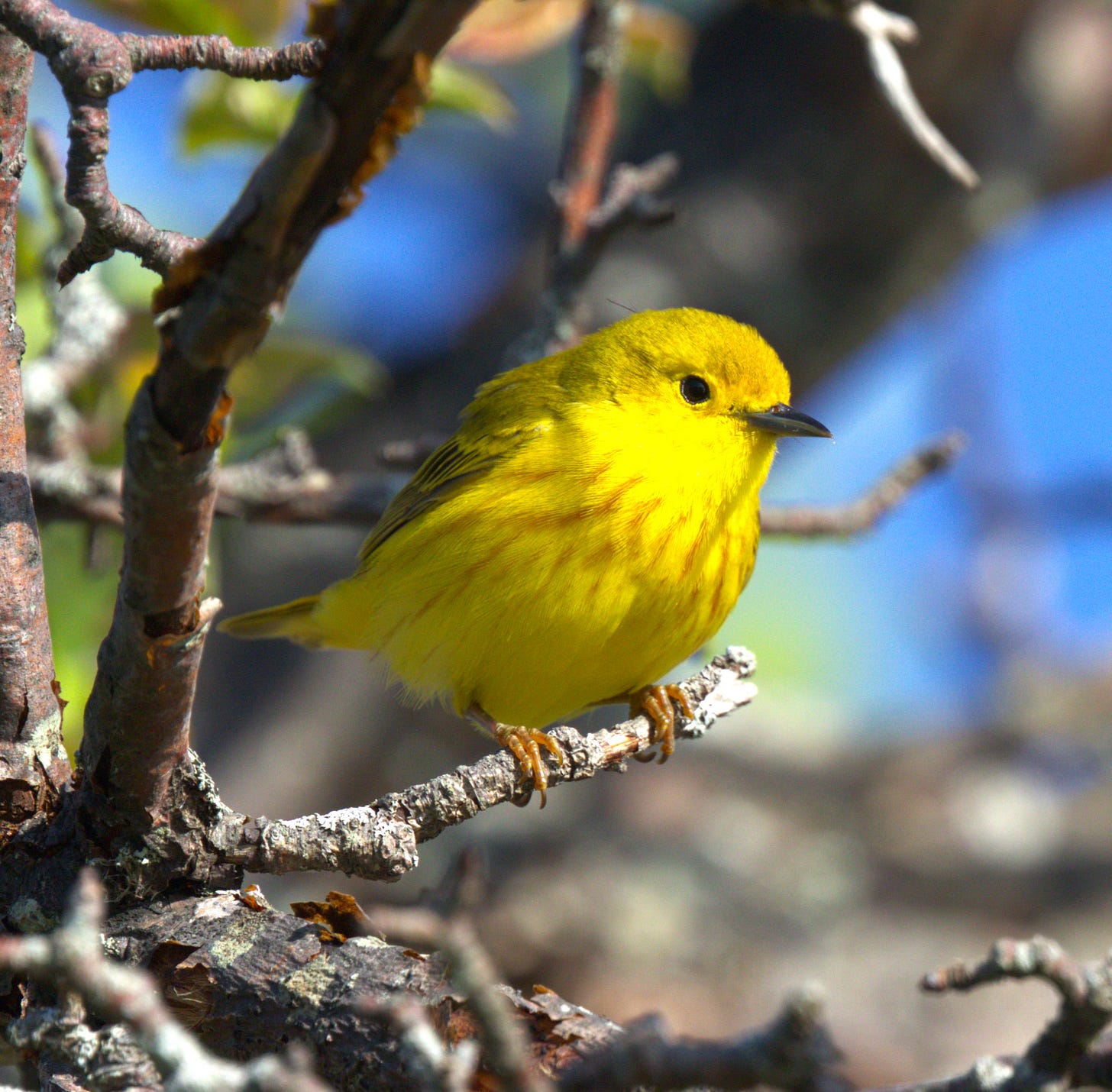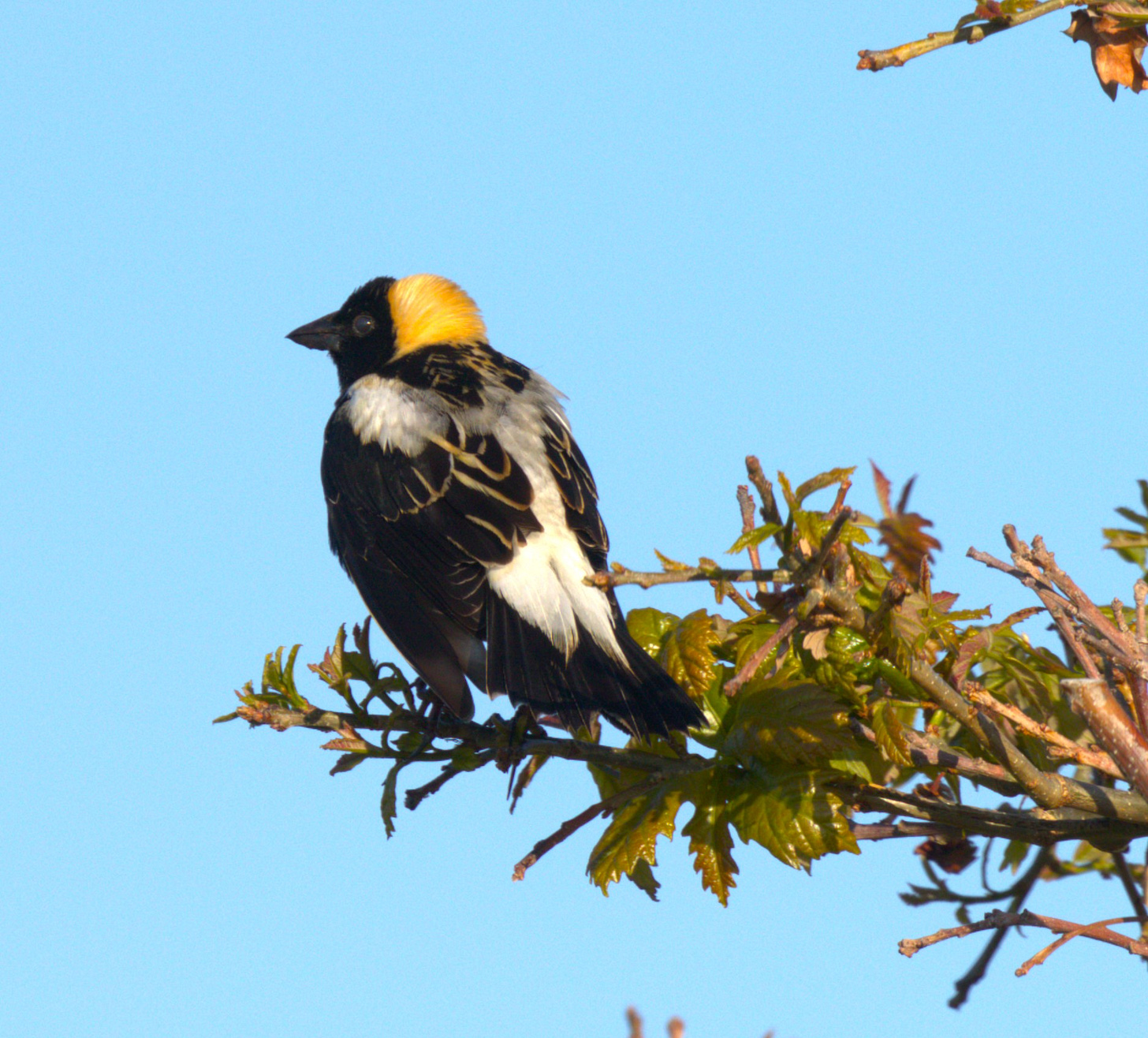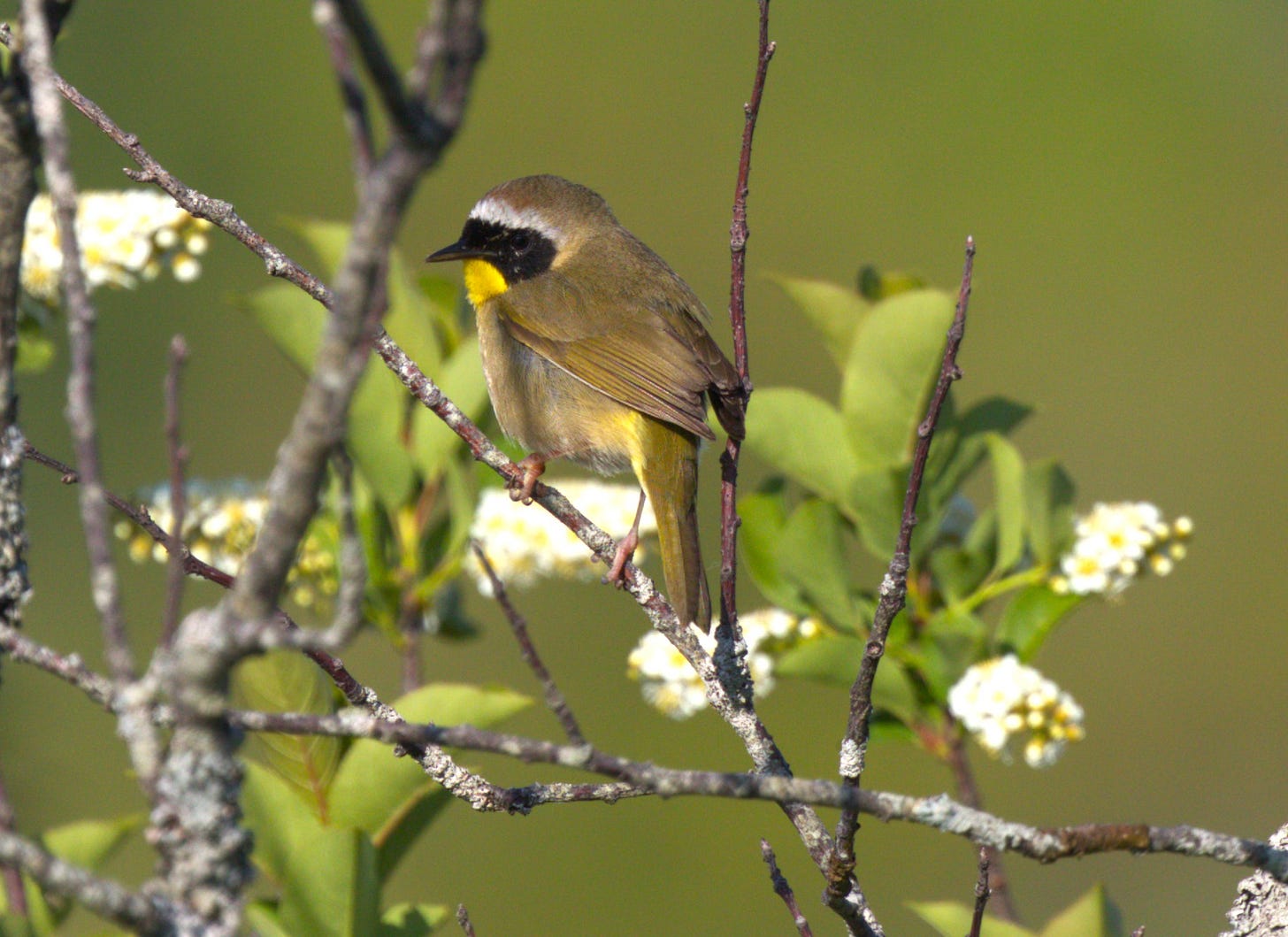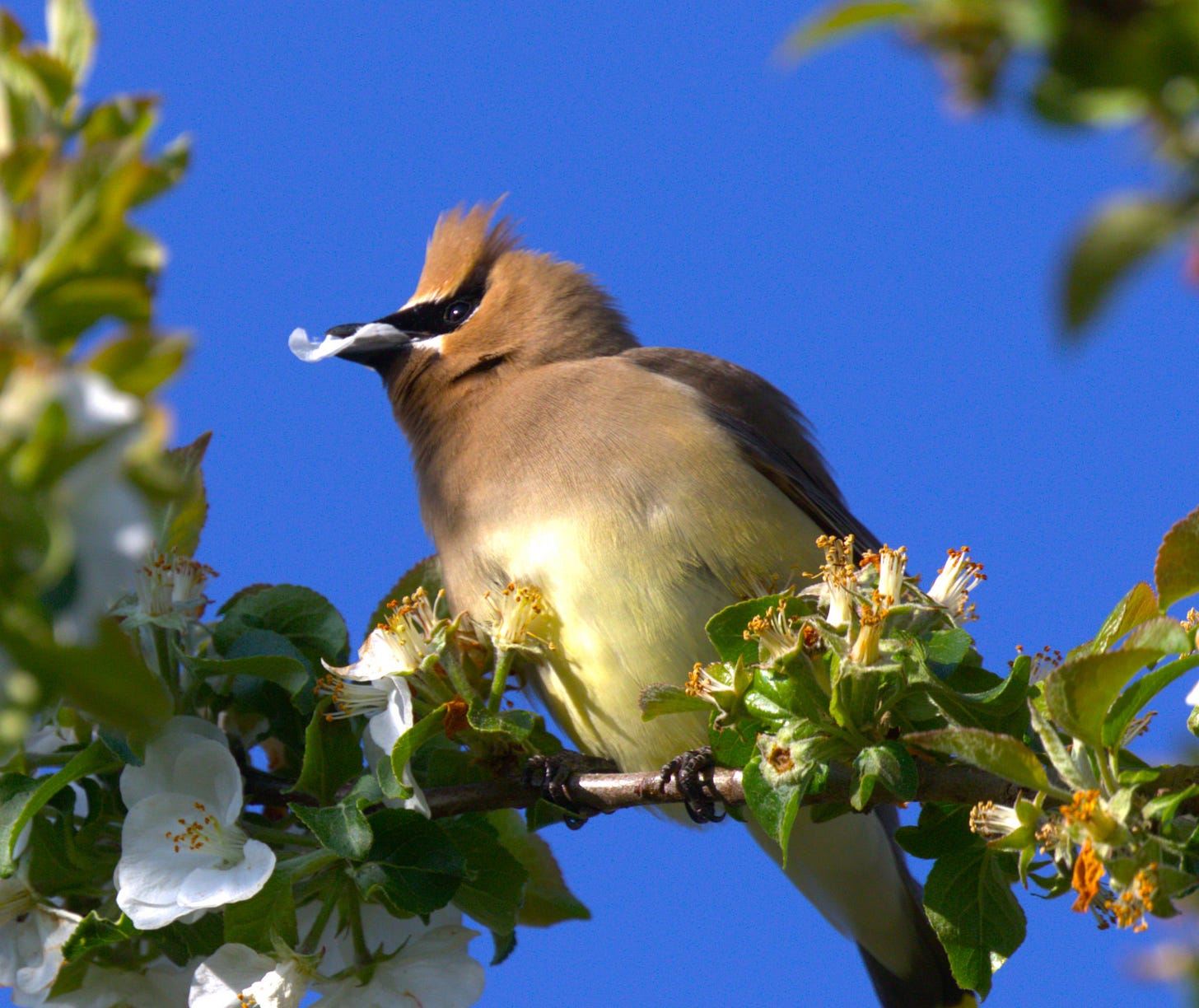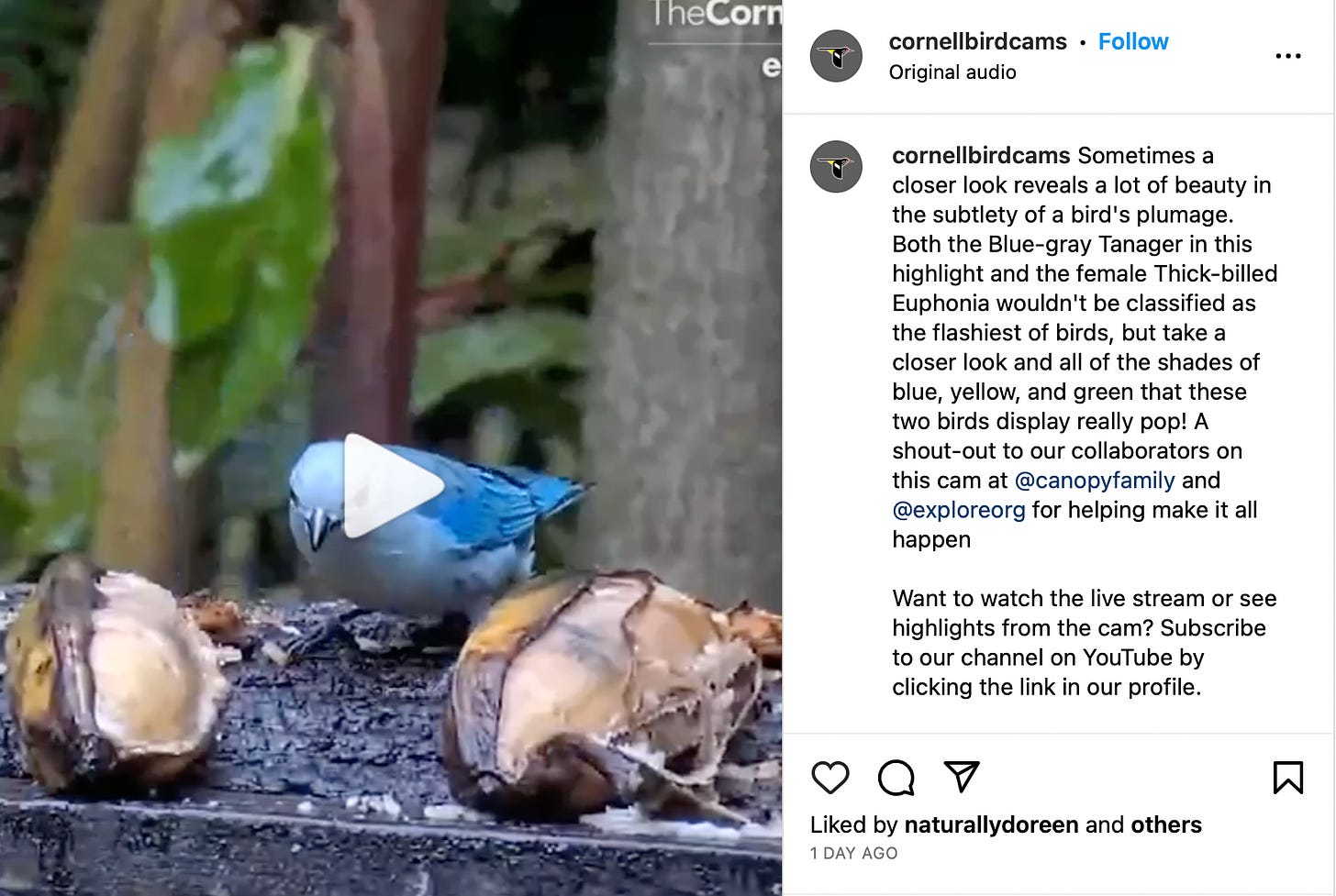1. Let’s start with a wonderful essay by Christian Cooper, adapted from his forthcoming book: Early in the morning of May 25, 2020, I biked from my apartment on Manhattan’s Lower East Side to Central Park to go birding in the Ramble. Despite the uncertainties of the time — New Yorkers were living in a hot spot of the raging Covid pandemic, with no vaccine in sight — I strove to start this warm, sunlit Memorial Day on a happy note by wandering my favorite urban woodlands in search of migrating songbirds. I was focused on the end-of-season hunt for a mourning warbler, a small yellow and gray skulking bird that’s difficult to spot and relatively rare. I hadn’t yet seen one that year. Visiting the park in the morning to look for birds has long been a springtime routine for me. I wake before sunrise and grab my Swarovski binoculars — a 50th-birthday present from my father — and head out the door. (via The New York Times)
2. What’s in a name? A lot, it turns out, to some folks: Stephen Hampton has been watching birds for more than 50 years, and for almost all of that time, he thought nothing of names like Townsend’s warbler or Anna’s hummingbird: “They were just the names in the bird book that you grow up with,” he told me. Then, a few years ago, Hampton realized how Scott’s oriole—a beautiful black-and-yellow bird—got its name. Darius Couch, a U.S. Army officer and amateur naturalist, named the oriole in 1854 after his commander, General Winfield Scott. Sixteen years earlier, Scott dutifully began a government campaign of ethnic cleansing to remove the Cherokee people from their homelands in the Southeastern United States. Scott’s oriole is a monument to a man who oversaw the dispossession of Hampton’s family, and saying its name now “hits me in the gut, takes my breath away,” Hampton, who is a citizen of the Cherokee Nation, wrote in 2021. (via The Atlantic)
3. The importance of native habitat: The magnolia warbler travels as many as 2,000 miles, high above the Gulf of Mexico and across the entirety of the United States, before arriving in the cool climate of Canada’s boreal forest to breed. On a morning in May, one of the tiny yellow songbirds found itself entangled in a black net strung up in a clearing deep inside Hays Woods. It had stopped to rest and refuel, and avian ecologist Nick Liadis fished the small bird from the mesh. Gently, he held the warbler’s neck between his index and middle fingers and measured the wings, tarsals and body fat. He weighed the bird, affixed a tiny aluminum alloy cuff to its left foot, and released it back into the forest. The process, called banding, allows researchers like Liadis to study dozens of species of songbirds as they migrate each year. The data can be a valuable resource in understanding the complex local ecosystems in which the birds briefly reside. (via PublicSource)
4. More praise for Merlin: On a relatively quiet Sunday evening in my neighborhood, I sat out on my porch about an hour before sunset. With the construction, lawn mowing and car sounds of the weekday finally absent, the air came alive with a chorus of birds. Using my recently downloaded Merlin Bird ID app from the Cornell Lab of Ornithology, I clicked on Sound ID and the app began recording all the tweets, chirps, caws and coos surrounding me. I let the app run for 20 minutes, recording bird sounds the entire time. It automatically identified the birds behind the noises. As it did, it kept a running list in the window and would light up yellow beneath each bird’s name to indicate what my phone – and my ears – were hearing. (via EarthSky)
5. Speaking of Merlin, globalization Merlin-style: The free Merlin Bird ID app from the Cornell Lab of Ornithology just hit a major milestone: The digital field guide and ID assistant can now help users identify birds in any country – a grand total of 10,315 species. Merlin provides detailed descriptions, photos and sounds of each bird, and innovative features to help users identify what they saw. “The original idea for Merlin was all about helping you figure out, ‘What’s that bird I’m seeing?’ in a quick and simple way,” said Jessie Barry, program manager of the Macaulay Library at the Cornell Lab. “With this newest update, anyone anywhere in the world can now use Merlin to learn about the birds around them.” (via Cornell Chronicle)
6. Encouraging data from Hawk Mountain: Hawk Mountain's official spring migration count has ended with just shy of 1,200 birds of prey recorded — 25% above the 10-year average. “A red-tailed hawk ended the spring count … with clear skies and light [northerly] winds making for a pleasant day on the lookout,” according to a news release from the Berks County sanctuary. “This season included some challenging conditions as clear skies and unfavorable wind kept many birds at a distance.” During the spring migration count, which runs from April 1 through May 15, volunteers and staff tallied more than a dozen birds of prey, officials said. The highest daily count was recorded April 21, when more than 200 broadwings soared by the mountain. While there were more turkey vultures and bald eagles tallied than seasons prior, osprey numbers dropped, according to Hawk Mountain. (via Lehigh Valley News)
7. In case you need to brush up on your vultures: Vultures in the United States are a critical part of the ecosystem and clean up carrion, which helps control disease spread. Vultures are also essential for nutrient recycling, returning nutrients from carcasses back into the ecosystem. Vultures in the United States all belong to the New World vulture or condor family. New World vultures evolved separately from Old World vultures and are adapted to the warm climates of the Americas. The term “Cathartidae,” representing the family of New World vultures, originates from a Greek word that translates to “purifier.” New World vultures have a bare head and often bare neck, thought to be adaptations for hygiene, enabling the birds to stay clean after feeding on rotting meat. While vultures in the United States look similar to vultures found in Europe, Asia, and Africa, they are not related. Known as convergent evolution, these unrelated groups of vultures evolved similar features. (via Geography Realm)
8. “…an overall optical illusion”: How does a male chaffinch turn up the color intensity of its feathers from muted winter tones to bright, vibrant, in-your-face breeding garb? It’s a simple question to which the obvious answer might be to molt, especially given that feathers, like our hair, are dead material that once formed cannot be actively altered. However, chaffinches are one of the first birds to start their strutting and singing with the first warm days of spring, often as early as February, so they don’t have time to molt. The resources required to reclothe the birds’ bodies in energetically expensive feathers might also be at their lowest at this time of year. So how do they manage the transition from dull pastels to punchy pigments in a matter of months? (via Discover Wildlife)
9. “…an explosion of colour, of seabirds, of waders and exciting migrants” – Shetland in Spring, of course: Shetland in autumn is a special place for local and visiting birders. It is undeniably the place to be, sharing its gold status only with the warmer, comparatively tropical and long-established destination of the Isles of Scilly, in the extreme south-west of Britain. But from May onwards, the islands are an explosion of colour, of seabirds, of waders and – of course – exciting migrants to keep all who visit on their toes and with hands firmly on the binoculars. Being a string of more than 100 small islands isolated in the North Sea, it is the perfect location to host off-course, lost vagrants and create a hotbed of excitement for anyone out looking for them. (via Bird Guides)
10. Or, say, Switzerland: Walking in the Swiss mountains is one of my favorite things to do, especially when I’m combining it with bird-watching. Years ago I purchased a book (Vögel beobachten in der Schweiz) from Vogelwarte.ch, the Swiss birding organization. The book recommended a whole bunch of different walks (Ausflüge). I have not done them all, but I have done many. I believe Switzerland is a good place for birding. Many of the walks have hides for us humans, so we can observe without disturbing the fauna. Moreover, it’s just a great place to hike, with so many trails marked with little yellow signs or just yellow diamonds. It can be steep, though, so bring a walking stick. Also, if you see cows behind a fence, don’t touch the fence — it could be electrified. (via Daily Kos)
11. Smugglers nabbed in Miami: The 24 bright green baby parrots began chirping and bobbing their heads the second anyone neared the large cages that have been their homes since hatching in March. The Central American natives, seized from a smuggler at Miami International Airport, are being raised by the Rare Species Conservatory Foundation — a round-the-clock effort that includes five hand feedings a day in a room filled with large cages. At just 9 weeks old, these parrots have already survived a harrowing journey after being snatched from their nests in a forest. They are almost fully feathered now and the staff has started transitioning them from a special formula to a diet of food pellets and fruit. (via Fortune)
12. Update on New York state’s “Lights Out” efforts: Birds migrate across the country at this time of year, but certain conditions can disrupt their journey and they could benefit from human assistance. Laura Dibetta, director of outdoor recreation at the New York Department of Environmental Conservation, is part of a mission to provide a solution, and is trying to protect and save a species that faces a serious challenge. "Light pollution, bird-friendly buildings, etc. We can protect bird species if we do our part. Even if it's not all of us, it will still make a difference,” said DiBetta. According to the Urban Bird Foundation, over 1 billion birds die annually in the United States due to collisions with human-made structures such as vehicles, buildings and windows, power lines and communication towers. Dibetta says the state is doing its part to help with these efforts. (via Spectrum Local News)
13. The search goes on (for the South Island kokako): Over the past few months, I’ve had the pleasure of diving deep into the Search For Lost Birds, an initiative that’s steering the world’s army of birdwatchers, conservationists and researchers towards finding 10 of the most enigmatic and important bird species lost to science. There have already been some successes – including the extraordinary rediscoveries. The last accepted sighting of the South Island kōkako was in 1967, and it was declared extinct in 2007 – but a potential sighting that same year led to its reclassification, and a charitable trust set up to find it has been searching for the bird ever since. (via New Scientist)
14. And lastly, from Mass Audubon, a book review of Drew Lanham’s forthcoming “The Home Place”: "In me, there is the red of miry clay, the brown of spring floods, the gold of ripening tobacco. All of these hues are me; I am, in the deepest sense, colored.” From these fertile soils of love, land, identity, family, and race emerges a big-hearted memoir by ornithologist and professor of ecology J. Drew Lanham. Dating back to slavery, Edgefield County, South Carolina is a place "easy to pass by on the way somewhere else", and has been home to generations of Lanhams. Readers meet this extraordinary family, including Drew himself, who over the course of the 1970s falls in love with the natural world around him. As his passion takes flight, however, he begins to ask what it means to be "the rare bird, the oddity.” By turns angry, funny, elegiac, and heartbreaking, The Home Place is a remarkable meditation on nature and belonging, a deeply moving memoir and exploration of the contradictions of Black identity in the rural South and in America today. (via Massachusetts Audubon)
Bird Photo of the Week
By Hap Ellis, Cedar Waxwing – Laudholm Farm, Wells, ME.
Bird Videos of the Week
By WKBN 27 News, “How New Technology is Impacting Bird Watching”.
Inside History - Silent Feathers.
Cornell Live Bird Cam - Blue-grey Tanager.
Cornell Live Bird Cam - Baltimore Orioles.

